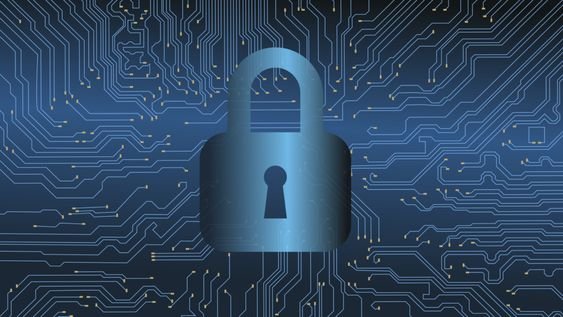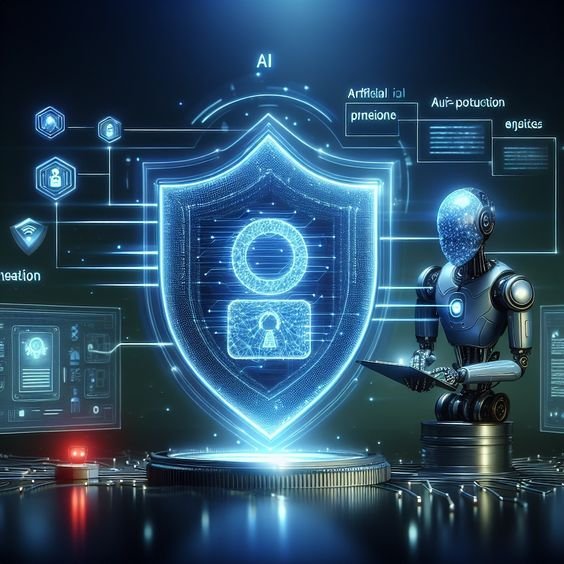
In an increasingly interconnected digital world, cybersecurity has become a critical concern for organizations across all sectors. With the growing number of cyber threats and data breaches, implementing robust cybersecurity frameworks and standards is essential to protect sensitive information and ensure the integrity of digital systems. This comprehensive article explores the key cybersecurity frameworks and standards, their significance, and how organizations can implement them effectively to safeguard their digital assets.
Importance of Cybersecurity Frameworks and Standards
Enhancing Security Posture
Cybersecurity frameworks and standards provide structured guidelines and best practices to improve an organization’s security posture. They help identify potential vulnerabilities, establish protective measures, and respond effectively to security incidents.
Regulatory Compliance
Many industries are subject to stringent regulatory requirements regarding data protection and cybersecurity. Adopting recognized frameworks and standards ensures compliance with these regulations, avoiding legal penalties and reputational damage.
Risk Management
Implementing cybersecurity frameworks allows organizations to systematically assess and manage risks. By identifying and mitigating potential threats, organizations can reduce the likelihood and impact of cyber incidents.
Building Trust
Adherence to established cybersecurity standards builds trust with customers, partners, and stakeholders. Demonstrating a commitment to security reassures them that their data is protected, fostering stronger business relationships.
Key Cybersecurity Frameworks
NIST Cybersecurity Framework
The National Institute of Standards and Technology (NIST) Cybersecurity Framework is one of the most widely adopted frameworks globally. It provides a comprehensive approach to managing and reducing cybersecurity risks.
Components:
- Core: The framework core consists of five functions – Identify, Protect, Detect, Respond, and Recover – which provide a strategic view of an organization’s cybersecurity posture.
- Implementation Tiers: These tiers help organizations assess their cybersecurity maturity and align their practices with risk management goals.
- Profile: The profile aligns the framework’s functions with the organization’s specific needs, providing a customized approach to cybersecurity.
Implementation: - Conduct a risk assessment to identify critical assets and vulnerabilities.
- Develop a current profile to document existing cybersecurity practices.
- Create a target profile outlining desired cybersecurity outcomes.
- Develop an implementation plan to bridge gaps between the current and target profiles.
- Continuously monitor and update the framework to adapt to evolving threats.
ISO/IEC 27001
ISO/IEC 27001 is an international standard for information security management systems (ISMS). It provides a systematic approach to managing sensitive information, ensuring its confidentiality, integrity, and availability.
Components:
- Risk Assessment and Treatment: Identify and assess risks to information assets and implement appropriate controls to mitigate them.
- ISMS Policies: Establish and maintain information security policies aligned with organizational objectives.
- Internal Audits: Conduct regular audits to evaluate the effectiveness of the ISMS and identify areas for improvement.
- Continuous Improvement: Continuously monitor, review, and enhance the ISMS to adapt to changing security requirements.
Implementation:
- Define the scope of the ISMS based on organizational needs and objectives.
- Conduct a risk assessment to identify and evaluate information security risks.
- Develop and implement risk treatment plans to address identified risks.
- Establish information security policies and procedures.
- Conduct internal audits and management reviews to ensure compliance and effectiveness.
- Continuously improve the ISMS based on audit findings and changing security requirements.
CIS Controls
The Center for Internet Security (CIS) Controls are a set of best practices designed to enhance cybersecurity by focusing on key areas that reduce the risk of cyber attacks. The controls are prioritized into three implementation groups based on the organization’s resources and risk profile.
Components:
- Basic Controls: Fundamental security measures that provide essential protection.
- Foundational Controls: Advanced security measures that build on basic controls.
- Organizational Controls: Security measures related to policies, procedures, and people.
Implementation:
- Assess the organization’s current security posture against the CIS Controls.
- Prioritize the implementation of basic controls to establish a strong security foundation.
- Implement foundational and organizational controls based on the organization’s risk profile and resources.
- Regularly review and update the controls to adapt to evolving threats and vulnerabilities.
COBIT (Control Objectives for Information and Related Technologies)
COBIT is a framework for IT governance and management, developed by ISACA. It provides a comprehensive approach to aligning IT with business objectives, managing risks, and ensuring compliance.
Components:
- Governance: Establishing governance structures and processes to ensure effective decision-making and risk management.
- Management: Implementing management practices to ensure efficient and effective use of IT resources.
- Process Model: A structured approach to managing IT processes, including planning, implementation, and monitoring.
Implementation:
- Define the scope and objectives of the IT governance framework.
- Establish governance structures and processes to support decision-making and risk management.
- Implement management practices to ensure the efficient use of IT resources.
- Develop and maintain a process model to guide IT activities and ensure alignment with business objectives.
- Regularly review and update the framework to ensure its continued effectiveness.
PCI DSS (Payment Card Industry Data Security Standard)
PCI DSS is a set of security standards designed to protect payment card information and reduce the risk of data breaches. It applies to all organizations that handle payment card transactions.
Components:
- Build and Maintain a Secure Network: Implementing firewalls and secure configurations to protect cardholder data.
- Protect Cardholder Data: Encrypting sensitive data and implementing access controls.
- Maintain a Vulnerability Management Program: Regularly updating and patching systems to address vulnerabilities.
- Implement Strong Access Control Measures: Restricting access to cardholder data based on business need.
- Regularly Monitor and Test Networks: Conducting regular security monitoring and testing to detect and respond to security incidents.
- Maintain an Information Security Policy: Establishing and maintaining security policies to guide the organization’s security efforts.
Implementation:
- Conduct a PCI DSS assessment to identify gaps and areas for improvement.
- Implement security measures to address identified gaps and ensure compliance with PCI DSS requirements.
- Regularly monitor and test security measures to ensure their effectiveness.
- Maintain an information security policy to guide the organization’s security efforts.
- Implementing Cybersecurity Frameworks and Standards
Step 1: Conduct a Risk Assessment
A comprehensive risk assessment is the first step in implementing cybersecurity frameworks and standards. Identify critical assets, assess vulnerabilities, and evaluate potential threats to determine the organization’s risk profile.
Steps:
- Identify and prioritize critical assets based on their importance to the organization.
- Assess vulnerabilities and potential threats to these assets.
- Evaluate the likelihood and impact of potential threats.
- Develop a risk profile to guide the implementation of security measures.
Step 2: Develop a Cybersecurity Strategy
Based on the risk assessment, develop a cybersecurity strategy that outlines the organization’s security objectives, policies, and procedures. The strategy should align with business objectives and regulatory requirements.
Components:
- Security Objectives: Define clear and measurable security objectives aligned with business goals.
- Policies and Procedures: Develop and document security policies and procedures to guide the organization’s security efforts.
- Roles and Responsibilities: Assign roles and responsibilities for implementing and maintaining the cybersecurity strategy.
Step 3: Implement Security Controls
Implement security controls based on the chosen cybersecurity framework or standard. Prioritize controls based on the organization’s risk profile and resources.
Steps:
- Identify and prioritize security controls based on the risk profile and resources.
- Implement basic security controls to establish a strong security foundation.
- Implement advanced security controls to address specific risks and vulnerabilities.
- Regularly review and update security controls to adapt to evolving threats and vulnerabilities.
Step 4: Conduct Training and Awareness Programs
Educate employees about cybersecurity best practices and the importance of following security policies and procedures. Conduct regular training and awareness programs to keep employees informed and vigilant.
Components:
- Training Programs: Develop and deliver training programs to educate employees about cybersecurity best practices.
- Awareness Campaigns: Conduct awareness campaigns to keep employees informed and vigilant about potential threats.
- Regular Updates: Provide regular updates and reminders to reinforce security awareness and best practices.
Step 5: Monitor and Evaluate Security Measures
Regularly monitor and evaluate the effectiveness of security measures to ensure they remain effective and relevant. Conduct audits, vulnerability assessments, and penetration testing to identify and address weaknesses.
Steps:
- Conduct regular audits to evaluate the effectiveness of security measures.
- Perform vulnerability assessments and penetration testing to identify and address weaknesses.
- Continuously monitor security measures to detect and respond to potential threats.
Step 6: Continuously Improve
Continuously improve the organization’s cybersecurity posture by regularly reviewing and updating the cybersecurity strategy, policies, and procedures. Stay informed about emerging threats and best practices to adapt and enhance security measures.
Steps:
- Regularly review and update the cybersecurity strategy, policies, and procedures.
- Stay informed about emerging threats and best practices.
- Implement continuous improvement processes to enhance the organization’s security posture.
- Future Trends in Cybersecurity Frameworks and Standards
Integration with AI and Machine Learning
Artificial intelligence (AI) and machine learning (ML) are increasingly being integrated into cybersecurity frameworks and standards. These technologies can enhance threat detection, automate response actions, and improve overall security posture.
Trends:
- Use AI and ML to enhance threat detection and response capabilities.
- Integrate AI and ML into cybersecurity frameworks and standards to improve efficiency and effectiveness.
- Develop AI-driven tools and solutions to address emerging threats and vulnerabilities.
Focus on Privacy and Data Protection
As data privacy regulations become more stringent, cybersecurity frameworks and standards are placing greater emphasis on protecting personal data and ensuring compliance with privacy requirements.
Trends:
Incorporate data privacy and protection measures into cybersecurity frameworks and standards.
Develop and implement privacy-focused security controls to protect personal data.
Ensure compliance with data privacy regulations through regular audits and assessments.
Emphasis on Cyber Resilience
Cyber resilience focuses on an organization’s ability to withstand and recover from cyber incidents. Cybersecurity frameworks and standards are increasingly incorporating resilience measures to ensure organizations can continue to operate in the face of cyber threats.
Trends:
- Develop and implement resilience measures to ensure organizations can withstand and recover from cyber incidents.
- Incorporate resilience measures into cybersecurity frameworks and standards.
- Conduct regular resilience assessments and testing to ensure preparedness for cyber incidents.
Cybersecurity frameworks and standards are essential for organizations to protect their digital assets, comply with regulations, and build trust with stakeholders. By adopting recognized frameworks such as the NIST Cybersecurity Framework, ISO/IEC 27001, CIS Controls, COBIT, and PCI DSS, organizations can enhance their security posture and manage risks effectively.
Implementing these frameworks involves conducting risk assessments, developing cybersecurity strategies, implementing security controls, conducting training and awareness programs, monitoring and evaluating security measures, and continuously improving the organization’s security posture.
As the cybersecurity landscape continues to evolve, integrating AI and machine learning, focusing on privacy and data protection, and emphasizing cyber resilience will be critical for organizations to stay ahead of emerging threats and ensure the security of their digital assets. By staying informed about best practices and trends, organizations can proactively adapt and enhance their cybersecurity measures to protect against cyber threats and safeguard their digital future.
ALSO READ: First ‘Robot Suicide’ in South Korea: What to Know









